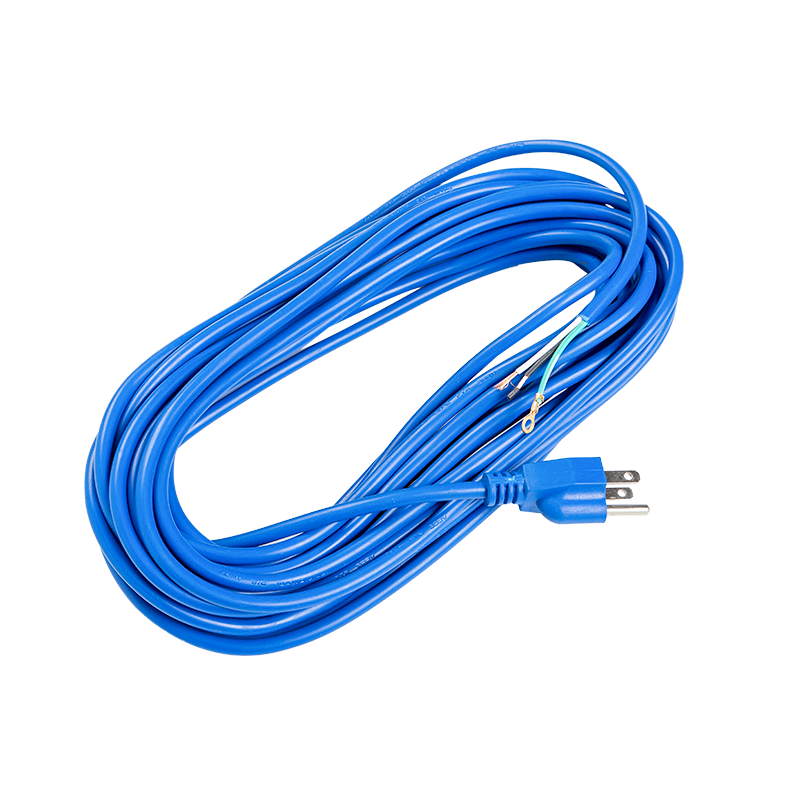When the power connection cable is running under long-term high load, its electrical performance is a very important consideration, which directly affects the safety, stability and efficiency of the power system. When running under long-term high load, the electrical performance of the cable is mainly affected by factors such as current carrying capacity, temperature rise, insulation aging, contact resistance, etc.
The current carrying capacity refers to the maximum current that the cable can safely carry for a long time without causing overheating. The current carrying capacity of the cable is closely related to the conductor material, cross-section, insulation thickness and surrounding environmental conditions of the cable.
Under long-term high load operation, the current may approach or exceed the rated current of the cable, which will cause the cable temperature to rise, thereby affecting the electrical performance. Under high load conditions, the cable may overheat due to overload operation, causing the insulation material of the cable to age and the conductor resistance to increase, thereby affecting the normal transmission of the current, and even causing safety problems such as cable damage or fire.
When the current passes through the cable, heat is generated due to the interaction between the current and the resistance, and the temperature of the cable rises. When the temperature is too high, the performance of the insulation material will deteriorate, and even melting or rupture will occur, affecting the electrical performance of the cable.
Under long-term high-load operation, the temperature rise of the cable will cause the following problems:
The insulation layer of the cable gradually ages due to the influence of temperature, reducing its pressure resistance, insulation and heat resistance. The decline in insulation performance will increase the risk of current leakage and may cause electrical faults such as short circuit and leakage.
The increase in the temperature of the cable conductor will increase the resistance of the conductor, thereby reducing the current transmission efficiency. The increase in resistance may also cause the cable to heat up more, forming a vicious circle.
Overload protection failure: Overheating may cause the failure of the cable overload protection device, further increasing the damage to the equipment and the risk of fire.

High temperature, frequent load fluctuations, chemical corrosion and other factors will accelerate the aging of cable insulation materials, thereby affecting their electrical properties. After the insulation material ages, its insulation performance decreases, which may cause current leakage or short circuit.
Different insulation materials (such as PVC, XLPE, EPR, etc.) have different tolerance to temperature. PVC materials have poor temperature resistance, and long-term high temperature may cause them to harden and crack; while XLPE materials have good high temperature resistance, but if they are overloaded for a long time, they may still age and crack.
The contact resistance at the cable connection points (such as joints, terminals, etc.) may increase under high load. This is because long-term current passing through the cable connection points may cause oxidation, corrosion or wear of the metal contact surface, increasing the contact resistance.
Increased contact resistance will cause local heating and form hot spots, which not only affects the normal electrical performance of the cable, but may also cause joint burnout or connection failure, further leading to failure of the electrical system.
Copper conductor cables have lower resistance and better conductivity, and can maintain relatively stable electrical performance under high load. However, copper conductors still have the risk of overheating, especially when the load is too large or overloaded for a long time.
Aluminum conductor cables are low in cost and light in weight, but their conductivity is relatively poor. When running under long-term high load, aluminum conductor cables may face greater temperature rise problems, and the contact resistance between the conductor and the joint may be more likely to increase than copper conductors, resulting in a higher risk of overheating and failure.
Cable overload protection devices (such as fuses, circuit breakers, etc.) play a vital role. Under high load operation, if the current is not cut off in time, the cable may fail due to overheating. Therefore, it is crucial to select a suitable overload protection device and set its action parameters reasonably.
Under high load, the thermal stability of the cable is particularly important. Cables with poor thermal stability are prone to overheating, melting and other faults, resulting in electrical system instability or safety hazards. Cables used in high temperature environments must ensure that their insulation materials and conductors have strong heat resistance.
When the power connection cable is running for a long time under high load, it will undergo multiple heating and cooling processes. This thermal cycle may cause fatigue of the cable material, further accelerating its aging and damage. Long-term thermal cycles may also cause cracking of the cable outer sheath, exposing the internal conductor or insulation material, and reducing its overall electrical performance and safety.
Ambient temperature is an important factor in cable operation. In a high temperature environment, the cable may reach an overheating state prematurely and may even be unable to withstand the rated current. In a low temperature environment, the cable may become fragile and easily damaged.
Moisture and water penetrate into the cable, which may cause the insulation performance to deteriorate and increase the risk of cable leakage. This effect is particularly serious in the case of high load operation, which may cause the cable to short-circuit or be damaged.
In some industrial environments, cables may be exposed to corrosive gases or chemicals, which can accelerate the aging of the cable outer sheath and insulation layer, leading to cable failure.
To ensure the safe operation of the power system, cable specifications and materials should be reasonably selected, regular maintenance and inspection should be carried out, and appropriate thermal management and overload protection measures should be taken to extend the service life of the cable and prevent electrical failures during high-load operation.



 English
English русский
русский















